-
Fast, reliable identification of pathogens
Life-threatening bacterial infections cause tens of thousands of deaths every year in North America, but current methods of culturing bacteria in the lab can take days to report the specific source of the infection, and even longer to pinpoint the right antibiotic that will clear the infection. Researchers have created an electronic chip that can analyze blood and other clinical samples for infectious bacteria with record-breaking speed.
-
-
California’s San Onofre nuclear power plant retired due to safety concerns
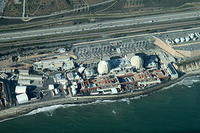
Southern California Edison (SCE) has decided it will retire the San Onofre nuclear power plant located on the California coast. The decision comes after officials debated for over a year whether the twin reactors could be safely restarted. The power plant is located in a populated area, with millions living near it.
-
-
Highly sensitive polymer detects IEDs
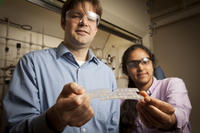
A chemical which is often the key ingredient in improvised explosive devices (IEDs) can be quickly and safely detected in trace amounts by a new polymer created by a team of Cornell University chemists. The polymer, which potentially could be used in low-cost, handheld explosive detectors and could supplement or replace bomb-sniffing dogs.
-
-
France weighing military options after French lab confirms Syrian use of sarin gas
Laurent Fabius, France’s foreign minister, said yesterday (Tuesday) that samples taken from Syria and tested in France confirm that sarin gas has been used by the Assad regime in several attacks in March and April. The U.K. Foreign Office said that samples from Syrian victims tested in British labs also confirmed the use of sarin. A UN investigative panel released its report yesterday, saying its experts had “reasonable grounds” to suspect small-scale use of toxic chemicals. Fabius said that France was not ruling out a military strike on the place where the gas is being stored.
-
-
Laser-driven neutrons to detect nuclear smuggling
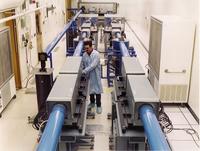
Researchers have successfully demonstrated for the first time that laser-generated neutrons can be enlisted as a useful tool in the war on terror, as Los Alamos shows first nuclear material detection by single short-pulse-laser-driven neutron source.
-
-
Fukushima-derived radioactivity in seafood poses minimal health risks
Researchers find that the likely doses of radioactivity ingested by humans consuming fish contaminated by radioactive radiation escaping from the debilitated Fukushima reactors fish, are comparable to, or less than, the radiological dosages associated with other commonly consumed foods, many medical treatments, air travel, and other background sources.
-
-
Health impact of Chernobyl accident overestimated: study
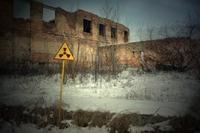
The impact of the Chernobyl nuclear accident has been seriously overestimated, while unfounded statements presented as scientific facts have been used to strangle the nuclear industry, according to Russian researchers.
-
-
Letters containing ricin sent to Mayor Michael Bloomberg, gun-control advocacy group

Two letters sent to Mayor Michael Bloomberg – one to his office in New York, the second to the Washington, D.C. offices of Mayors Against Illegal Guns, a non-profit gun-control group he has founded — contained traces of the deadly poison ricin.
-
-
Spokane, Wash. biolab could be closed due to budget cuts
Just two weeks ago, law enforcement agencies credited a bioterrorism laboratory in Spokane, Washington with quickly identifying the substance in several letters mailed to people in town as ricin. These same agencies now say that the biolab could close as a result of budget cuts.
-
-
Smartphone technology to accelerate development of unattended sensors
DARPA wants to develop low-cost, rapidly updatable intelligence, surveillance, and reconnaissance (ISR) sensors – to be used by the military on the ground, in the air, at sea, and undersea – in less than a year, a marked improvement to the current three-to-eight year development process. It hopes to do so by using an original design manufacturer (ODM) process similar to that of the commercial smartphone industry.
-
-
Smartphone turned into handheld biosensor

Scientists and physicians in the field could soon run on-the-spot tests for environmental toxins, medical diagnostics, food safety and more with their smartphones. Researchers have developed a cradle and app for the iPhone that uses the phone’s built-in camera and processing power as a biosensor to detect toxins, proteins, bacteria, viruses, and other molecules.
-
-
DHS debars scanner maker from government contracts
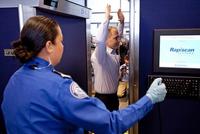
The Transportation Security Administration (TSA) has sent OSI Systems, the manufacturer of airport body scanners, a debarment notice which would prevent the company from receiving government contacts in the future. The notice was sent to the company after TSA determined that the company had failed to address security concerns about its scanners.
-
-
Oregon drills first responders for bioterrorism attack
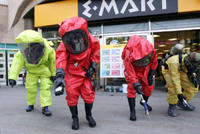
A three day drill called the Portland Area Capabilities Exercise (PACE), simulating a terrorist attack involving a biological weapon, will take place across fifty different facilities and sixty-five jurisdictions in the state of Oregon.
-
-
Ricin can kill, but there are more potent bioterror weapons
Ricin was in the headlines a few weeks ago, when envelopes containing the poison were mailed to President Obama, Senator Roger Wicker (R-Mississippi), and a Mississippi judge. The threat from ricin is low, however, because ricin cannot poison someone through contact with the skin. To be poisoned, an individual would have to ingest or inhale traces of the poison.
-
-
Quickly identifying chemical, biological warfare agents
For more than fifty years, researchers have been studying exactly how aspirin affects the human body. Despite thousands of publications on the topic, our understanding is still incomplete. Meanwhile, novel chemical and biological weapons have historically been mass produced within a year of discovery. Using current methods and technologies, researchers would require decades of study to gain a robust understanding of how new threat agents exert effects on human biological systems. DARPA wants to close this capability gap, which leaves U.S. forces vulnerable.
-
More headlines
The long view
Keeping the Lights on with Nuclear Waste: Radiochemistry Transforms Nuclear Waste into Strategic Materials
How UNLV radiochemistry is pioneering the future of energy in the Southwest by salvaging strategic materials from nuclear dumps –and making it safe.
Model Predicts Long-Term Effects of Nuclear Waste on Underground Disposal Systems
The simulations matched results from an underground lab experiment in Switzerland, suggesting modeling could be used to validate the safety of nuclear disposal sites.
